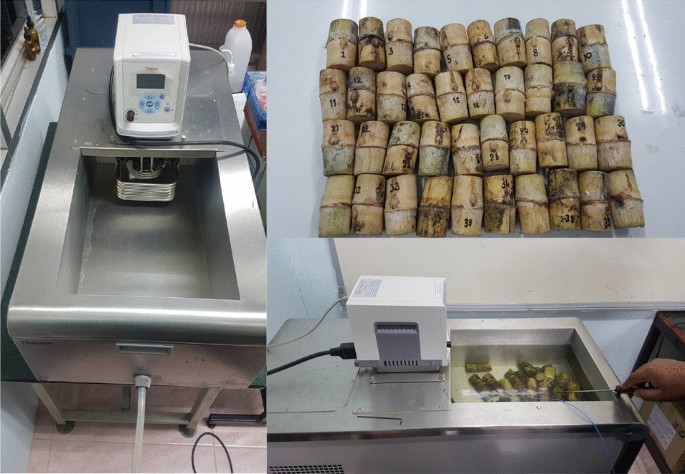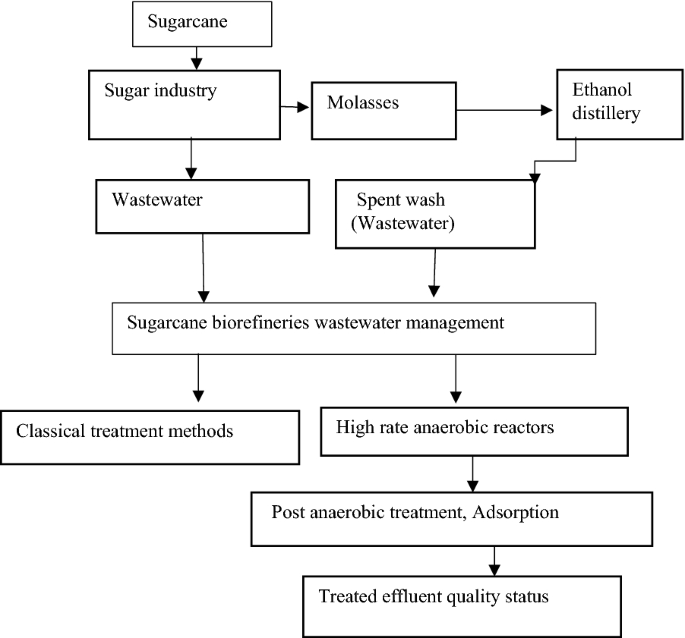From Waste to Wonder: How Products From Sugarcane Promote Zero Waste
From Waste to Wonder: How Products From Sugarcane Promote Zero Waste
Blog Article
Discover the Innovative Advantages of Products From Sugarcane for Sustainable Living
Sugarcane has become a crucial source in the quest for lasting living. Its diverse applications extend naturally degradable packaging, renewable resource, and much healthier food options. As sectors seek environmentally friendly alternatives, sugarcane's adaptability supplies appealing options. Nonetheless, the real possibility of sugarcane prolongs past its existing usages. Exploring its ingenious advantages can disclose brand-new paths toward an extra sustainable future. What other opportunities might this exceptional plant hold?

The Increase of Sugarcane as a Sustainable Source
As international understanding of ecological problems grows, sugarcane has emerged as a prominent lasting source. This flexible plant uses a range of benefits that add to green methods. Sugarcane is a sustainable resource, with the ability of growing in varied climates while taking in carbon dioxide, therefore reducing greenhouse gas exhausts. Its fast development cycle permits constant harvesting, causing a constant supply of raw material.Additionally, sugarcane farming typically calls for much less water contrasted to various other crops, making it an efficient alternative in water-scarce areas. The by-products of sugarcane, such as bagasse and molasses, can be repurposed for different applications, lowering waste and advertising round economy concepts. Furthermore, innovations in agricultural methods have caused more sustainable farming techniques, even more enhancing sugarcane's ecological profile. As customers significantly look for sustainable alternatives, sugarcane sticks out as a viable option for those committed to lowering their environmental footprint.
Eco-friendly Product Packaging Solutions
How can biodegradable product packaging services transform the means consumers approach sustainability? By utilizing sugarcane-based products, these cutting-edge options offer a compelling alternative to standard plastics. Naturally degradable product packaging made from sugarcane disintegrates naturally, noticeably lowering landfill waste and greenhouse gas discharges. As customers become significantly familiar with their ecological impact, the need for sustainable packaging proceeds to rise.These sugarcane-derived items not just serve practical objectives but additionally straighten with eco-conscious consumer worths. They provide a tangible method for businesses and individuals to contribute to a round economy, advertising source effectiveness and lessening environmental impacts. In addition, as sectors take on naturally degradable choices, they promote a society of sustainability that resonates with an expanding group looking for responsible choices.In essence, naturally degradable packaging options from sugarcane represent an essential progression in sustainable practices, empowering consumers to make environmentally friendly decisions without giving up comfort or high quality.
Renewable Resource Generation From Sugarcane
A considerable part of eco-friendly energy generation can be stemmed from sugarcane, showcasing its flexibility past standard farming uses. Sugarcane biomass, consisting of bagasse and leaves, is a potent source for bioenergy manufacturing. This biomass can be converted into biofuels such as ethanol, which acts as a cleaner choice to fossil fuels. Additionally, the burning of sugarcane results generates steam and electrical power, offering an energy source for sugar mills and nearby communities.The growing of sugarcane also adds to carbon sequestration, as the plants take in carbon dioxide during their development cycle. By using sugarcane for energy, waste is minimized, and lasting methods are motivated. This sustainable power technique not only supports energy requirements however likewise advertises country advancement, producing tasks in bioenergy sectors. Overall, sugarcane sticks out as a principal in the change to lasting power options, straightening with international initiatives to decrease carbon footprints.

Eco-Friendly Textiles and Fabrics
Environment-friendly textiles and materials stemmed from sugarcane offer a promising alternative to typical products. These naturally degradable alternatives not just decrease ecological effect however also provide toughness and performance equivalent to conventional materials. Sustainable production processes further boost their appeal, making them an indispensable part of a lasting lifestyle.
Biodegradable Fabric Choices
Why is the modification towards biodegradable textile choices essential for lasting living? The raising recognition of environmental deterioration has actually motivated a search for options to conventional textiles, which frequently contribute to contamination and waste. Eco-friendly textiles, stemmed from renewable resources such as sugarcane, use an appealing service. These products break down normally, lowering land fill buildup and decreasing ecological impact. In addition, they can help reduced carbon footprints and dependence on fossil gas. As consumers become more eco-conscious, the need for sustainable textiles grows, encouraging suppliers to spend and introduce in naturally degradable options. This modification not only sustains lasting methods however also fosters a round economic situation, leading the way for an extra accountable technique to fashion and textile production.
Resilience and Performance
Resilience and efficiency are critical factors when reviewing environment-friendly textiles and materials. Sugarcane-derived materials show impressive toughness and durability, making them appropriate for different applications. These fabrics usually show superior moisture-wicking homes, which improve convenience in everyday wear. Furthermore, their all-natural fibers contribute to breathability, making certain that garments remain fresh and wearable even popular conditions. The efficiency of sugarcane-based textiles reaches their resistance to tear and use, permitting products to keep their stability with time. Moreover, these environment-friendly textiles can be dealt with to enhance UV defense and stain resistance, satisfying the practical needs of customers without endangering sustainability. Eventually, sugarcane textiles supply an unified equilibrium of toughness and efficiency, interesting environmentally conscious people.
Sustainable Manufacturing Processes
The remarkable resilience and efficiency of sugarcane-derived fabrics are matched by sustainable production procedures that prioritize environmental obligation. These processes use renewable sources, lessening dependence on nonrenewable fuel sources and lowering carbon footprints. By using the byproducts of sugarcane growing, makers can create environment-friendly materials while advertising waste reduction. Advanced strategies, such as water-efficient dyeing and eco-friendly treatments, better boost the sustainability of these fabrics. Additionally, the usage of non-toxic chemicals guarantees that the manufacturing process does not hurt communities or human health and wellness. This dedication to sustainability not only attract eco mindful customers but additionally sustains neighborhood economic situations by advertising lasting agricultural techniques. In general, sugarcane-derived textiles stand for a considerable step towards a greener future in the apparel industry.
Sugarcane-Based Biofuels and Their Effect

Sugarcane-based biofuels have actually emerged as a substantial alternate energy source, providing a sustainable remedy to the globe's expanding power needs. These biofuels, stemmed from the fermentation of sugarcane juice or molasses, present a more lasting alternative contrasted to fossil fuels. Their production process generates reduced greenhouse gas exhausts, adding to environment change reduction efforts.Additionally, sugarcane biofuels can enhance power security by diversifying energy resources and decreasing dependancy on imported oil. The growing of sugarcane additionally advertises country development, producing work and stimulating neighborhood economies.However, issues pertaining to land use and food competition continue, as raised biofuel production might impact food supply chains. Sustainable farming techniques are necessary to stabilizing these competing passions and making certain that biofuel production does not weaken food safety. Overall, sugarcane-based biofuels represent an encouraging method visite site for a greener energy future, supplied that their ecological and social effects are meticulously handled.
Much Healthier Alternatives: Sugarcane in Food Products
While lots of customers look for healthier choices in their diets, sugarcane products use a nutritious alternative to fine-tuned sugars and fabricated sweeteners. Derived from the natural extraction of sugarcane juice, these products maintain important nutrients, including vitamins and minerals, that are commonly lost in refined sugars. Sugarcane contains antioxidants and nutritional fiber, contributing to overall health and wellness.Many health-conscious individuals are turning to sugarcane syrup and jaggery, which give a lower glycemic index contrasted to traditional sugars, making them ideal for those taking care of blood glucose degrees. In addition, sugarcane-derived sugar can boost the flavor of numerous meals without the damaging effects related to man-made additives.This change towards natural sweetening agents not only promotes far better nutritional options however also lines up with sustainable living methods, as sugarcane is a sustainable source. Therefore, sugarcane products are becoming positive options in the domain of food.
The Future of Sugarcane in Lasting Technologies
The future of sugarcane is positioned to incorporate cutting-edge applications that prolong beyond conventional usages. Its potential as a resource for eco-friendly product packaging solutions and renewable resource sources highlights its function in lasting methods. Exploring these developments might significantly affect ecological preservation and resource administration.
Eco-friendly Packaging Solutions
An enhancing variety of business are transforming to eco-friendly product packaging remedies stemmed from sugarcane as an appealing option to traditional plastics. These innovative products, typically made from sugarcane fibers and bioplastics, break down normally, decreasing the resilient ecological impact related to conventional plastic waste. By using renewable energies, sugarcane-based packaging contributes to an extra sustainable production cycle, lining up with international efforts to combat contamination and climate adjustment. Furthermore, these options often preserve the sturdiness and functionality needed for numerous applications, from food containers to shipping materials. As consumer demand for eco-friendly choices expands, services adopting sugarcane product packaging not just boost their brand name picture but likewise play a pivotal role in promoting a round economic situation, leading the means for a greener future.
Renewable Power Sources
Eco-friendly packaging remedies are simply one aspect of the more comprehensive possibility of sugarcane in advertising sustainability. An additional substantial application exists in sustainable energy resources. Sugarcane is a functional crop that can be made use of to create biofuels, such as ethanol, which acts as a cleaner alternative to nonrenewable fuel sources. The fermentation procedure of sugarcane juice returns ethanol that can power cars and create electrical power. Furthermore, the results of sugarcane processing, like bagasse, can be made use of to create biomass power, offering a reliable and sustainable approach to harness power. This twin duty as both a source of biofuel and biomass emphasizes sugarcane's possibility in decreasing carbon emissions and supporting a change to a more sustainable power landscape in the future.
Frequently Asked Inquiries
How Is Sugarcane Harvested Sustainably?
Sugarcane harvesting can be lasting via techniques like hands-on cutting, which minimizes soil interruption, and utilizing machinery that reduces gas consumption (Products From Sugarcane). Plant rotation and integrated parasite management better improve ecological health and wellness and promote long-term soil fertility
What Are the Ecological Effects of Sugarcane Farming?

Can Sugarcane Products Be Reused?
The concern of whether sugarcane items can be reused reveals a favorable outlook. Lots of sugarcane-derived products, such as bioplastics and product packaging, are developed for recyclability, contributing to a much more sustainable waste monitoring technique within environmental factors to consider.
Are There Any Type Of Disadvantages to Using Sugarcane-Based Products?
The downsides of using sugarcane-based products include potential land use competition with food crops, obstacles in large manufacturing, and concerns about the environmental effect of monoculture farming practices, which can diminish biodiversity and soil health.
Exactly How Does Sugarcane Growing Affect Citizen Communities?
Sugarcane farming influences neighborhood communities by supplying employment possibilities and boosting neighborhood economic situations. Nevertheless, it can also bring about land conflicts and ecological worries, affecting agricultural practices and area health, requiring a balanced strategy to advancement. Developments in farming methods have actually led to more sustainable farming methods, even more boosting sugarcane's ecological profile. In addition, the burning of sugarcane byproducts produces vapor and electrical power, supplying an energy source for sugar mills and close-by communities.The farming of sugarcane also contributes to carbon sequestration, as the plants soak up carbon dioxide during their development cycle. By making use of sugarcane for power, waste is minimized, and sustainable methods are his explanation motivated - Products From Sugarcane. Sugarcane contains antioxidants and nutritional fiber, contributing to overall health and wellness.Many health-conscious individuals are transforming to sugarcane syrup and jaggery, which provide a lower glycemic index compared to standard sugars, making them appropriate for those managing blood sugar degrees. Additionally, the by-products of sugarcane processing, like bagasse, can be made use of to create biomass power, providing a lasting and efficient approach to harness energy
Report this page